How to make advertising sustainable
How to make advertising sustainable
The advertising industry is struggling to measure its carbon footprint. Experts call for a common standard, while consumers demand trustworthy marketing.
By Ricki Rebecka Petrini
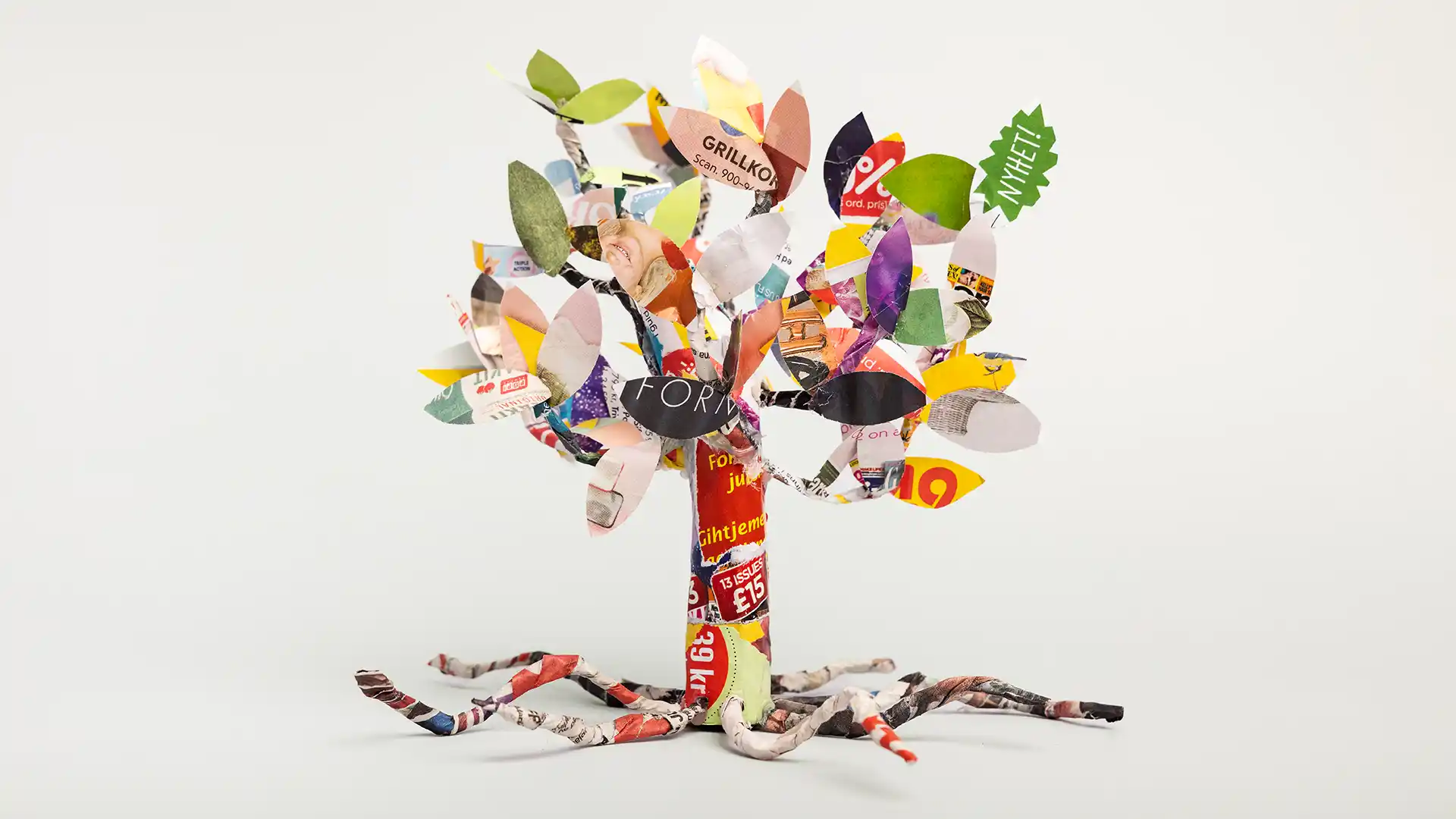
How to make advertising sustainable
The advertising industry is struggling to measure its carbon footprint. Experts call for a common standard, while consumers demand trustworthy marketing.
Words by Ricki Rebecka Petrini
It’s a well-known fact that brands need to take ownership throughout the entire value chain as they strive to achieve their ambitious sustainability goals. But the advertising industry has yet to offer the right tools to measure its own carbon footprint. If sustainability is the message, are there measures that are more sustainable than others? And how do you as an advertiser even begin to measure it? Simply put, what is sustainable advertising?
“All of us working in marketing know that our job is supposed to lead to sales, sales that in turn lead to consumption, which results in emissions, according to current business models,” says Karin Grohman. She’s the project leader for the Comm to Act Planet initiative, which was started by the four industry organisations: IAB, Sveriges Annonsörer, Sveriges Mediebyråer and KOMM.
This statement was proclaimed during the launch event with the above-mentioned industry bodies, and it points to the heart of the matter – the elephant in the room if you like. We live at a time when companies across industries must face the fact that a solid sustainability plan is no longer simply a desirable asset to have. It’s an essential one. While brands are battling with green concepts and how to converse around them, new hurdles loom on the horizon, hurdles that are hard to digest for even the most seasoned of advertising specialists.

Until now, in the advertising business, the climate issue has mostly been about the message.

Until now, in the advertising business, the climate issue has mostly been about the message.
What puzzles virtuous marketers and CEOs who’ve “gone green” is the question of responsibility and what role to play in a value chain that paradoxically boosts business and hurts the environment. The climate message has long since frequented most media plans drawn up by any respectable brand. But until now, it has mostly been about the message, not so much about the footprints tailing award-winning advertising and savvy sustainability campaigns.
“We who work in marketing need to put ourselves in the driver’s seat, take greater responsibility and be more involved in sustainability work. We are experts in driving change, and communication is an important and effective tool to contribute to a sustainable consumption culture, as well as changed norms and behaviours,” says Hanna Riberdahl, CEO at Sveriges Annonsörer.
Industry professionals pay attention
According to the Advertised Emissions study, by Purpose Disruptors, there was a 28% per capita increase in emissions in England within one year due to increased consumption as a result of advertising. Figures like these point to the fact that communication is indeed an effective tool to drive behaviour. Even if the behaviour is increased consumption and is harmful to the environment.
Industry professionals have started to pay attention – the launch of the Comm to Act Planet initiative in May 2023 may be one of the most evident signs of that in the Nordic market. The initiative pushes for collective responsibility to futureproof advertising.
The fear of being called out for greenwashing is high among Nordic advertisers.


The fear of being called out for greenwashing is high among Nordic advertisers.
There are several different climate initiatives underway from both media agencies and media outlets, where calculators have been developed to be able to determine the climate footprint of media. The purpose is to facilitate media planning and media buying, which is positive, says Hanna Riberdahl, but she also points to the risk of having different methods and different currencies for how we calculate.
“It will be incredibly difficult to compare and get a fair picture in the end. Therefore, we must agree on a common standard. We are incredibly happy that our parent organisations, the World Federation of Advertisers (WFA), AdNetZero and AdGreen, have taken on the responsibility to develop this global standard, and we are involved in this work on a local level.”
Fear of greenwashing
The fear of being called out for greenwashing is high among Nordic advertisers, according to the Comm to Act Planet team, something that results in so-called “green hushing.” This is a phenomenon often associated with greenwashing but rather it describes a culture of silence, in which brands avoid communicating their climate initiatives altogether.
When the advertising industry made its first contributions to fighting climate change, it was all about the message. Copywriters and content creators were not only successful in motivating the general population about brands’ efforts to limit their emissions, they also had marketers and media shielded from any scrutiny related to measuring their own carbon footprint. Until now.
“The most important thing for everyone in our value chain is knowledge. We must increase knowledge in all areas about how our work affects the environment and climate. This applies to everything – from our own impact to ensuring that every day we make decisions that result in lower CO2 emissions. We must also ensure that the messages are not misleading and that we communicate our climate work to a greater extent,” says Hanna Riberdahl.

Defining what is sustainable advertising and what is not might be easier said than done, defining adequate data is a challenge.

Defining what is sustainable advertising and what is not might be easier said than done, defining adequate data is a challenge.
Raising awareness and measuring the emissions from advertising’s share of the value chain is one of many actions that can contribute to important insights. But perhaps it’s not the most important solution to making the industry sustainable, says Markus Ahlberg, Chief Sustainability Officer, Schibsted.
“It is important to coordinate internally regarding how and what we measure. Measuring CO2 emissions is very complex, and if it happens without coordination, there is a big risk that we will not achieve any comparability between different advertisements and media, which is the main purpose. Moreover, there are few other industries that have found a good way to compare CO2 emissions; therefore we should be humbled by the fact that it is difficult to measure advertising.”
In the end, marketers will need to find a way to juggle two tasks at the same time, as demands for profit won’t wait until the climate issue is solved.
“Advertisers need to be credible in their communication through transparency and by actively solving problems that benefit consumers, all while solving problems for society and the environment,” says Markus Ahlberg.
A lack of adequate data
Defining what is sustainable advertising and what is not might be easier said than done, as legislative bodies on a European level are still looking for adequate data.
“There is a lack of data on climate change impact so, without data, climate footprint is often an estimate. This is changing rapidly, and EU and new regulations have been pushing for greater awareness and transparency,” says Marie Baumgarts, partner and sustainability expert at KPMG.
With over 20 years of experience from working with sustainability in various capacities, Marie knows a thing or two about the difficulties of creating cohesiveness among different groups. She is a former member of the European Commission’s Technical Expert Group that advised the Commission on the EU Taxonomy; a classification system that helps companies and investors identify “environmentally sustainable” economic activities to make sustainable investment decisions.
The difficulty of measuring and having transparency throughout the whole value chain is apparent but does not alleviate the responsibility from any of the parties.
“The one who places the order, the client, has the main responsibility. But everyone in the value chain is accountable for their part and their own value chains,” says Marie Baumgarts.
Experts seem to unanimously agree that having the right tools and common currencies when measuring carbon footprints is imperative. Yet one more incentive needs to be accounted for as we are trying to identify any symptoms of an identity crisis in advertising – the consumer. A majority of Swedish consumers say advertising has an important role to play in climate change according to a Novus study (2023). So as the industry now is shifting its focus to the tools and currencies of battling climate change, the consumer still calls for trustworthy marketing. Once again, it is all about the message.
A wider audience
When asked about what the key factors are for sustainable advertising of tomorrow, climate expert Marie Baumgarts points out.
”This will be a differentiator, meaning that ads for sustainable products and services will likely reach a wider audience than ads for non-sustainable products and services.”
The aim of the Comm to Act Planet-initiative is to make everyone who works in marketing feel confident in advocating the most crucial issues of our time. This is certainly a good start and a sign of the times that climate change is at the top of the advertising agenda. It seems the industry wants to identify what measures need to be taken for it to be sustainable. As long as sustainability is at the heart of the message, brands and their advertising allies, are obliged to measure the true effects of their communication activities.
The remedy for an industry identity crisis is, by all accounts, more cohesiveness. And that is a cure that for sure will ungag the marketing community that never quite identified with any hush label in the first place.
Industry professionals have started to pay attention – the launch of the Comm to Act Planet initiative in May 2023 may be one of the most evident signs of that in the Nordic market. The initiative pushes for collective responsibility to futureproof advertising.
[Sassy_Social_Share]

Ricki Rebecka Petrini
Head of Marketing & Communications, Schibsted Marketing Services Sweden 2021-june 2023.
Years in Schibsted: 2.5
My favourite song the last decade: Novacane – Frank Ocean
Beyond the carbon tunnel vision
Beyond the carbon tunnel vision
Our focus on CO2 emissions and the climate crisis makes us forget about other societal and environmental challenges that are equally important. It’s crucial that we now ensure that innovations solve problems from a broader perspective, says Markus Ahlberg, Chief Sustainability Officer at Schibsted.
By Markus Ahlberg
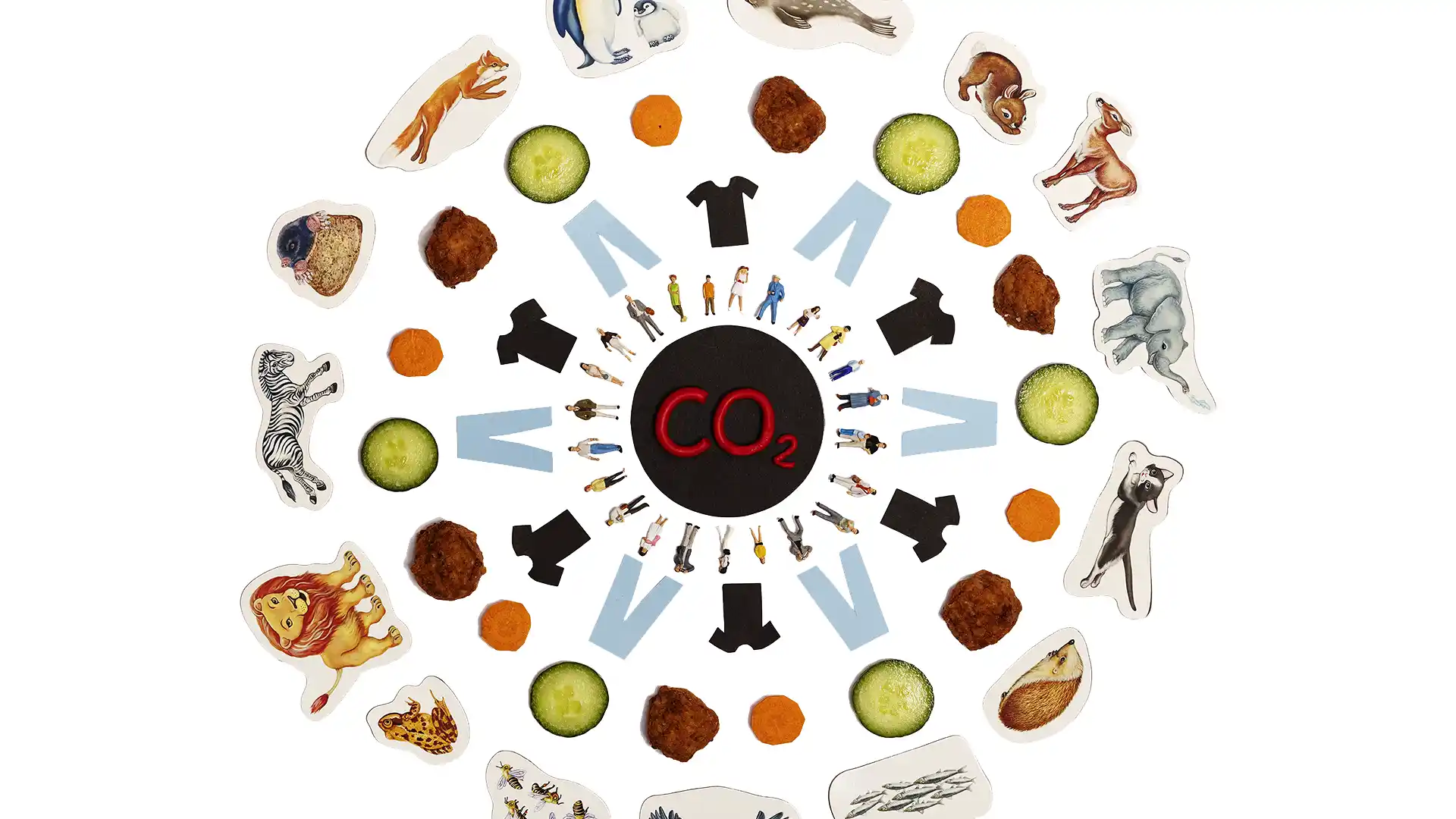
Beyond the carbon tunnel vision
Our focus on CO2 emissions and the climate crisis makes us forget about other societal and environmental challenges that are equally important. It’s crucial that we now ensure that innovations solve problems from a broader perspective, says Markus Ahlberg, Chief Sustainability Officer at Schibsted.
By Markus Ahlberg
We are at the epicentre of a great acceleration of parallel and interconnected societal and environmental developments. Over the past decades, we have witnessed exponential growth in technology and GDP. Delving into details, we also see exponential changes, both positive and negative, in many areas. There’s positive acceleration, such as increased living standards, a connected world, and technological advancements. But there are also negative trends, like growing inequality, depletion of natural resources, and ecosystem breakdowns. All these accelerations share a common source: they are driven by human activity. This parallel chaos is the world we live in, and we must address it when building our future because all these developments are interconnected.
The notion that the climate crisis is the sole key to a sustainable future paints an oversimplified picture of our journey towards a greener future.

A too narrow focus on carbon emissions might exacerbate other issues or even create new problems.

A too narrow focus on carbon emissions might exacerbate other issues or even create new problems.
A broader perspective should consider areas such as equality, biodiversity and overconsumption of natural resources. For example, using wind power to combat climate change sounds great, but it can harm biodiversity and the local communities where the wind farms operate. The same complexity arises with the idea of electric vehicles as saviours of a fossil-free world. But the need for mineral extraction can harm water and biodiversity. We need to change the narrative that climate is the only issue we need to tackle because the reality is much more complex than that. And a too narrow focus on carbon emissions might exacerbate other issues or even create new problems.
Embracing Holistic Sustainability
By broadening our perspective to encompass and understand important societal and environmental developments and systems, we can uncover layers of complexity that deserve and require our attention.
The Ecosystem Symphony
True environmental sustainability extends beyond carbon emissions to encompass the complete symphony of the ecological interactions that shape our world. Biodiversity, access to natural resources, and the delicate balance of ecosystems are all intertwined. A broader perspective requires acknowledging the fragile harmony that we must safeguard.
A narrow focus on carbon emissions falls short in addressing the overconsumption of natural resources, the ripple effects of species decline, or the cascading benefits of biodiversity preservation.
AI might offer a solution to apply systemic thinking, handle complexity and build models that balance all important areas, simultaneously.


AI might offer a solution to apply systemic thinking, handle complexity and build models that balance all important areas, simultaneously.
Social Threads in Sustainability
Sustainability isn’t just an environmental effort; it’s deeply connected to social equity and justice. For example, communities disproportionately affected by environmental degradation deserve recognition beyond a carbon-centric perspective. An illustrative example is how those of us in the Nordics, who will be less affected by climate change, should have a responsibility to support those in southern Europe who might need to migrate in ten years due to heat waves caused by a changing climate.
An inclusive sustainability narrative recognises the ripple effects of inequities and emphasises the importance of equitable solutions. If equality factors are not included in sustainability calculations, trust and democracy may be at risk, given the role equality plays in holding our society together.
A Financial Mosaic
The carbon tunnel analogy sometimes overlooks the economic intricacies that underpin sustainable development. Transitioning to cleaner energy sources entails grappling with economic dynamics, job transitions and the macroeconomic implications of a global shift. Sustainability, therefore, involves as much financial evolution as it does environmental change.
Consider the economic transitions that occur when communities reliant on carbon-intensive industries shift to renewable energy sources. The tunnel might obscure the struggles of communities facing job losses and economic uncertainty. By widening our perspective, we recognise the importance of just transition strategies that ensure economic resilience while forging a sustainable path forward.
Embracing new technologies
True sustainability depends on rethinking human behaviours, policy frameworks, and systemic shifts that go beyond technological boundaries. Recent technological developments related to artificial intelligence provide hope for new solutions to address our current narrow focus. Since the human brain appears limited in its ability to find comprehensive solutions, understand exponential change, and grasp the complexity of systems, technology like AI might offer a solution to apply systemic thinking, handle complexity and build models that balance all important areas, simultaneously.
Regardless of technological advancements, navigating the intricate path of sustainability requires breaking free from the tunnel’s constraints and embracing a comprehensive approach that weaves together environmental conservation, social equity, economic transformation, cultural understanding, and sound technological innovation.
[Sassy_Social_Share]

Markus Ahlberg
Chief Sustainability Officer, Schibsted
Years in Schibsted: 3
My favourite song the last decade: How Loud Your Heart Gets – Lucius
Why you should keep your light on when other brands go dark
Why you should keep your light on when other brands go dark
With bankruptcies in the Nordics reaching their highest in over a decade, it’s no surprise that companies are cutting back on marketing. But it’s a balancing act of cutting to survive today and investing to grow tomorrow.
By Christine Gelfgren

Why you should keep your light on when other brands go dark
With bankruptcies in the Nordics reaching their highest in over a decade, it’s no surprise that companies are cutting back on marketing. But it’s a balancing act of cutting to survive today and investing to grow tomorrow.
By Christine Gelfgren
In Byron Sharp’s ‘How Brands Grow,’ arguably one of the most influential marketing books of the past decade, he urges brands to never be silent. Why is that so important? The importance of the relationship between a brand’s market share and its share of voice, meaning how prominent the brand’s advertising is within its sector compared to its competitors, is well-known. Brands that have a higher share of voice than their market share have what’s called an “excess” share of voice and tend to grow relative to their competitors.
This relationship becomes particularly evident in times of economic downturn. Previous recessions serve as cautionary tales for companies who are considering weathering the storm by cutting significantly on marketing spend.
History offers us a blueprint
We live in what feels like unprecedented times, but ironically unprecedented times are the norm for every generation that’s come before us. Whether uncertain times have been caused by pandemics, wars or financial crises, we have more than a century’s worth of data showing the true cost of going silent when faced with uncertainty.
One of the first to study this was Vaile in 1927, who made a detailed examination of 200 companies during the economic depression and subsequent growth period post WWI. Companies that amplified their advertising budgets during the economic downturn not only maintained stability but experienced significant growth in sales. In contrast, companies that either reduced or abstained from advertising during this period lagged in sales performance.
Shortly after, Post, the ready-to-eat cereal category leader, saw themselves dethroned by Kellogg’s during the Great Depression. When Post slashed its ad spend, Kellogg’s doubled its budget, invested innovatively in radio ads and launched the now iconic cereal Rice Krispies. The aggressive marketing strategy yielded a 30% surge in profits and positioned Kellogg’s as the category leader, a title it has maintained for several decades.
Since then, the marketing landscape has evolved significantly, but the core truth remains unchanged. With each economic downturn, brands face the same decision—pull back or push forward. Brands that maintain, or even amplify, their advertising efforts in broad-reaching media during tough times stand a better chance of not just surviving but thriving.
What happens when brands go dark
For brands considering trimming their advertising spend, the good news is that up to six months off air won’t have detrimental effects on your brand, at least not according to a recent study by Millward Brown. The bad news is that if you continue after that it will likely weaken brand health, and once the decline sets in, it may be hard to reverse.
Kantar documented a telling case in which a leading UK beverage brand, enjoying a steady market share, chose to halt its advertising in one market for an entire year while maintaining its marketing investment in another. The market that went dark had a discernible 2% dip in market share, whereas the market that maintained spending held steady. When the brand eventually resumed its marketing the subsequent year, it couldn’t reclaim its lost share.
A comprehensive study from the Ehrenberg-Bass Institute that observed 365 U.S. brands gives further weight to this. When brands halted their advertising, they saw an average 10% decline in market share after one year, 20% after two years, and 28% after three years without advertising. Interestingly, smaller brands or those that were already experiencing a dip in their share before pulling their ads were more susceptible.
Short-term choices often have long-term consequences, and consistently sidelining advertising can be devastating for a brand’s future growth.
Finding opportunities when others cut back
While most brands won’t turn off advertising completely in times of economic downturn, they likely won’t spend with the same intensity. The brands that are able to resist cost cutting and maintain spend, they can often achieve an excess share of voice at a cheaper price. It’s like speaking with a steady voice in a room that all of a sudden gets a lot quieter, which gives you much more bang for the buck.
The IPA database underscores this strategy’s effectiveness, showing that 38% of companies reporting significant profit growth after the 2008 recession had increased their excess share of voice to over 8%.
By understanding the relationship between market share and the power of excess share of voice — especially when it’s more affordable — you’re set to make decisive, informed decisions, no matter the economic climate.
Creativity’s role
Just as it’s crucial to strive for excess share of voice, the same goes for obsessing about delivering creative advertising. Creative campaigns are twice as effective, and the audience remembers you more easily when the advertisement invokes an emotional response.
Featuring a cute dog in a commercial is a cheap trick to ramp up customers’ emotional response, and a 2022 study published in the Journal of Marketing discovered that people are more excited to buy products when they see dogs in ads. It’s no wonder that Amazon’s latest Super Bowl ad, featuring a heartwarming story of a rescue dog, scored among the highest in System1’s effectiveness study.
But just as the share of voice is relative to your category, so are your creatives. If all your competitors start using cute puppies in their commercials, the emotional response relative to your category levels out. The customers will then have a hard time attributing the commercial to the right advertiser and suddenly that puppy is just part of the noise, lost in a sea of furry faces vying for your attention.
Looking ahead
Having a steady voice when the room gets quieter will be one of the most important things brands can do to ensure their future growth through these tougher times. Incorporating emotion, creativity and ingenuity into your brand will amplify it to echo longer in the minds of consumers. It’s about understanding the nuances of your category, being aware of the saturation points, and having the foresight to pivot when needed. In the end, it won’t just be about who shouted the loudest, but rather who resonated the most.
[Sassy_Social_Share]
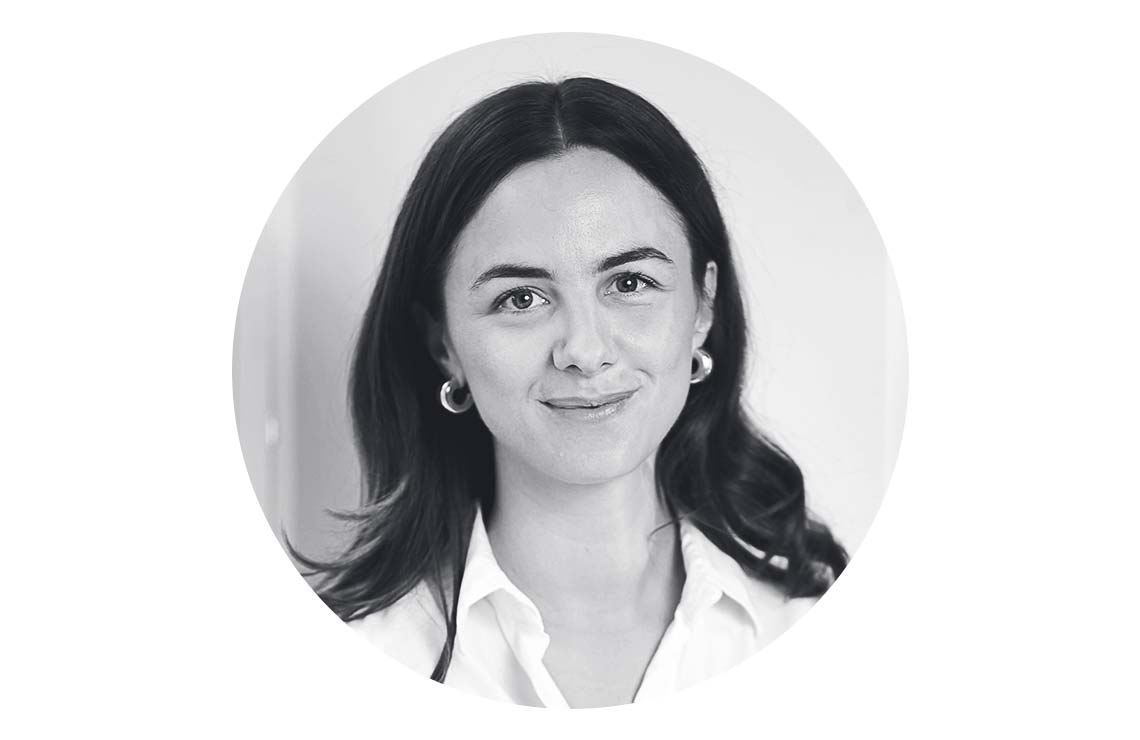
Christine Gelfgren
Marketing Strategist, Schibsted
Years in Schibsted: 0.5
My favourite song the last decade: Yellow Moon – Amason
We should align across the Nordics
“We should align across the Nordics”
The startup scene in the Nordics has taken giant leaps in the last ten years – perhaps most notably in Norway. Anders Mjåset, founder and CEO of the startup community Mesh sees some trends up ahead.
By Camilla Buch

“We should align across the Nordics”
The startup scene in the Nordics has taken giant leaps in the last ten years – perhaps most notably in Norway. Anders Mjåset, founder and CEO of the startup community Mesh sees some trends up ahead.
By Camilla Buch
Looking back, it’s clear that Norway was slower on the ball when establishing itself as a startup hub, compared to the other Nordic countries, Anders says.
“Compared to its neighbours, oil-rich Norway didn’t feel the impact of the financial crisis as early, which made other countries more prone to adapt. Norway has caught up now, though.”
In all of the Nordics, the digital economy has been in a startup (no pun intended) phase during the last 10-15 years but is now coming to a plateau with the super hype of 2022.
We’re now looking at a correctional phase, as evaluations drop significantly, and companies are less keen to invest.
What we currently have is a digital venture scene that is more involved in the business sector, taking up more space in politics and the public sector. It’s evolved from being the little guy, the challenger, to having more influence as a central part of the Nordic society. This evolution has also contributed to larger companies realising the need for digitalisation, innovation and, more recently, climate-focused action.

Anders Mjåset, CEO of startup community Mesh, believes the Nordics will keep a strong focus on impact-driven startups.

Anders Mjåset, CEO of startup community Mesh, believes the Nordics will keep a strong focus on impact-driven startups.
When looking at the future of the Nordic startup scene, Anders believes we need to be better at working across country lines. We’ve seen a lot of organic local growth, but the politics and founder environments should be more streamlined.
“Internationally, the Nordics are seen as one. To really mature and take up space in a global – and digital – market, we should align ourselves politically regarding startups and venture.”
Anders believes the Nordics will keep a strong focus on impact-driven startups, with climate being a driving force, and health-related innovation climbing.
“I think Schibsted has a real opportunity to be one of the biggest forces in the industry when it comes to the startup scene. The combined resources, knowledge from several fields and reach in Schibsted is unparalleled in the Nordics. That’s one of the main reasons Mesh is happy to be a partner to Schibsted, the possibility to push startup innovation in the right direction.”
Obviously, looking into the crystal ball, Anders believes that AI will be a massive part of startup and innovation in the coming years. Proptech, fintech and gaming are also big sectors where the Nordic countries are taking big strides, alongside climate and general impact.
We’ll have more digital-first companies built on venture dynamics, in contrast to a lot of the big slowly built businesses we’ve seen in the past. The revolution of AI will bring a lot of change and innovation, and it’ll be important for all kinds of businesses to keep up.
“I see no reason why we shouldn’t make the same kinds of goals for innovation as we’ve done for the climate – making the same kinds of efforts to modernise and bring society into the future,” Anders says. “And that future is built on the courage to take risks and push boundaries.”
This is Mesh
A Nordic community for the startup scene with workspaces in Oslo, Trondheim and Copenhagen. Schibsted and Mesh have a partnership where we will host events for our employees, Mesh members and their network.
[Sassy_Social_Share]
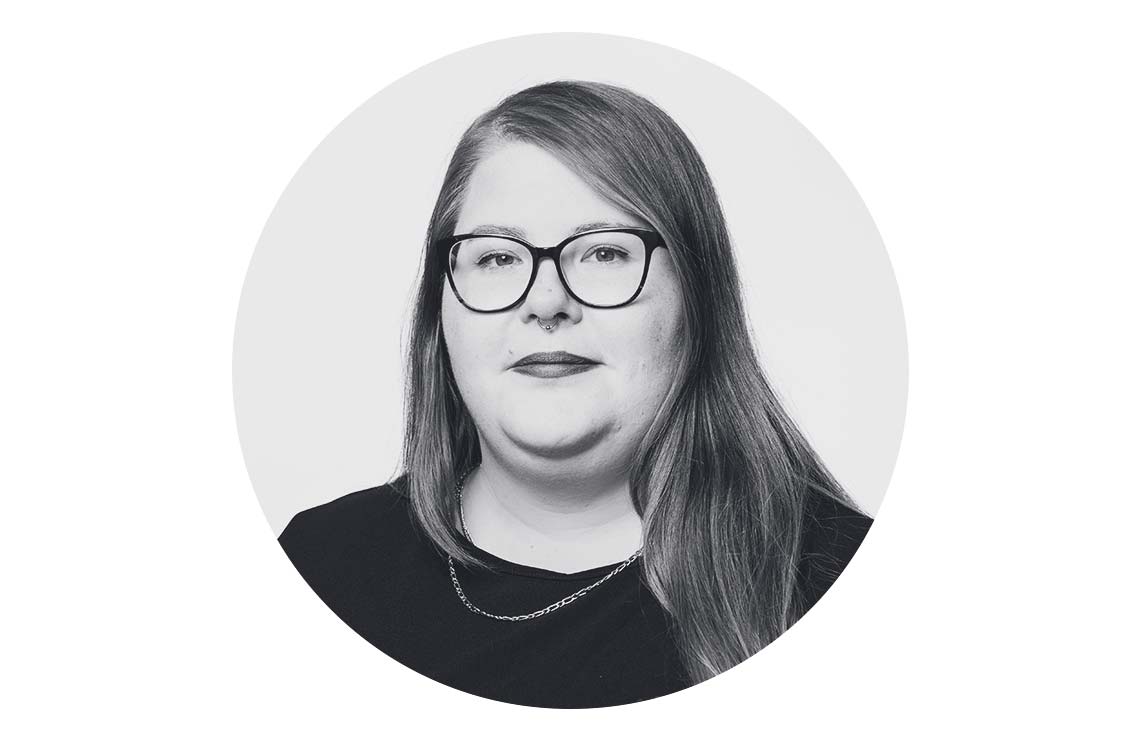
Camilla Buch
Communication Manager, Schibsted
Years in Schibsted: 3
My favourite song the last decade: Chronically Cautious – Braden Bales
Making immersive sound accessible for all listeners
Making immersive sound accessible for all listeners
Trondheim-based Nomono’s goal is to make recording just as easy as having a conversation. Now their sound capsule is ready for the market.
By Sylvia Brudeli

Making immersive sound accessible for all listeners
Trondheim-based Nomono’s goal is to make recording just as easy as having a conversation. Now their sound capsule is ready for the market.
By Sylvia Brudeli
The first snow of the season would soon blanket the city of Trondheim. With an intent gaze, Audun Solvang explored the NxtMedia 2016 conference. He was there to listen to the latest buzz in the world of audio and video. New innovations in virtual reality and 360 videos were popping up. And smartphones were on course to replace professional cameras. But it occurred to him that audio was not on par. Both in quality and ease of use. While video production was light years ahead.
With a PhD in 3D audio and ambisonics, Audun saw the untapped potential.
“I knew that If I could put the power of spatial audio in the hands of every content creator, it would transform the industry. In a big way,” he says.
Spatial audio basically means a feeling of the sound coming from all around you. Audun describes the experience as immersive, and then and there on that snowy day in Trondheim, he knew he wanted to make that feeling accessible to all listeners.
With extensive experience in the field, he went back to where he worked, down in the labs at Sintef Digital, an institute that conducts research and innovation in digital technologies and technology-oriented social sciences.
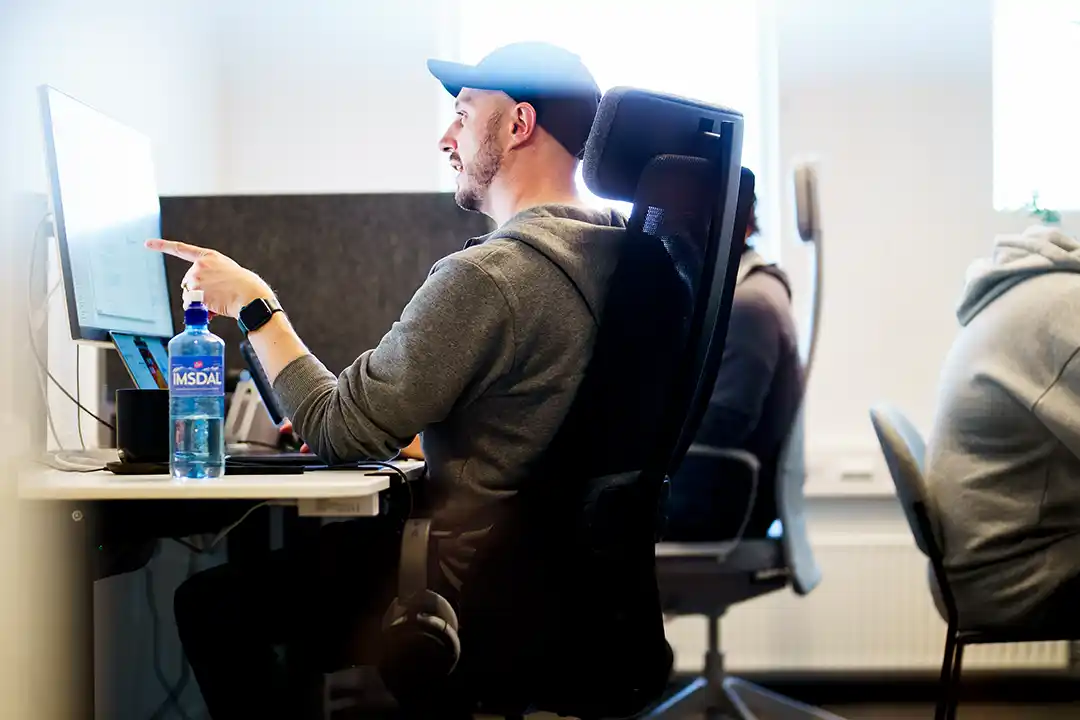
Peter Ringset, from the Nomono team.

Peter Ringset, from the Nomono team.
In 2018, he made a breakthrough with spatial positioning of microphones. Getting really close to the experience he had imagined.
By this time, podcasting was booming and support for spatial audio playback was coming to headphones and speakers. But the big bottleneck was still recording and post-production of spatial audio.
To get things going, he realised he needed help. Audun reached out to his former colleagues and experts in the area – Sigurd Saue and Jonas Rinde – about his idea. At the time, Jonas was CEO at Huddly and Sigurd was an associated professor in music technology at NTNU, the Norwegian University of Science and Technology.
“Audun had no problem convincing me that the project was technically sound and had great potential. The prospect of creating an audio tech company right here in Trondheim was truly appealing,” says Sigurd Saue.
Full perspective
Together, they set up a team of people with different backgrounds and experience levels across signal processing, user experience, consumer electronics and media production, so that they had a full perspective on what needed to be done and which challenges to solve. In 2019, Nomono was born.
From the very start, the goal has been to make recording and sharing stories just as easy as having a conversation. And to make it feel just as natural. The team envisions a new way of producing audio that is intuitive, creative, and connected from start to finish.
“Many challenges exist between recording and publishing. Getting ready and setting up equipment can feel like a time drain. Cables, microphones and obtrusive stands get in the way of natural conversations,” Audun explains.
Helge Berg Bache, Head of supply chain, opens up a Space Recorder.


Helge Berg Bache, Head of supply chain, opens up a Space Recorder.
Being bound to a physical studio can also limit imagination, and laborious editing and audio cleanup can distract the creator from being creative with the content. Faced with heaps of hurdles and complexities, even the most experienced creators sacrifice quality when crafting a story.
These are the fundamental problems that Audun and his team set out to solve.
“The whole idea is that anyone can just bring our kit to wherever you have a conversation, and simply push one button to start recording it.”
Reduces noise
Early 2023, the first Nomono portable kit for recording conversations and interviews in the field was ready for market. It consists of a recorder, four wireless mics, a charging case and access to a cloud service. But a challenging compliance process put sales on hold.
One of the secrets behind Nomono’s high-quality sound is an AI-based denoiser that identifies and reduces background and handles noise. Another AI-based method reduces crosstalk between the voice tracks. And then there’s that issue of spatial sound. Nomono solves that by spreading out voices spatially using localisation data from the mics.
With the Nomono workflow, your stories are also easy to transfer from recording to publishing. When you have finished your recording, all content is automatically uploaded to the cloud service, where you then can choose to enhance or spatialise your audio recording. It solves your needs for basic editing, including adding intros, outros and jingles, making the podcast fully ready for publishing either as a spatial audio podcast or as a normal stereo podcast.
At the beginning of September 2023, the sound capsule was fully compliant and ready for on-demand sale. Since then, Nomono has started to execute on their refined go-to-market strategy, inviting the 40,000 potential customers from their waiting list to finally be able to buy the kit after a long wait.
As a source of extra encouragement, they also won the 2023 SXSW Innovation Award in the audio category at the SXSW tech festival in Austin, Texas.
“With this award, a big milestone in the journey towards our vision of enabling spatial audio for storytellers was reached. A really nice proof that we are doing the right thing,” says Audun.
Beyond the technology, the team is also convinced that storytelling is a powerful thing, and that it connects people.
“Great stories entertain our emotions and expand our knowledge. And it has done so since the era of cave paintings all the way to the rise of podcasting today,” says the Chief Design Officer of Nomono, Viktor Rydal.
Fact
2019 Nomono was founded.
34 people are employed at the company.
Awarded the 2023 SXSW Innovation in the audio category.
Schibsted invested in the company in September 2022.
[Sassy_Social_Share]
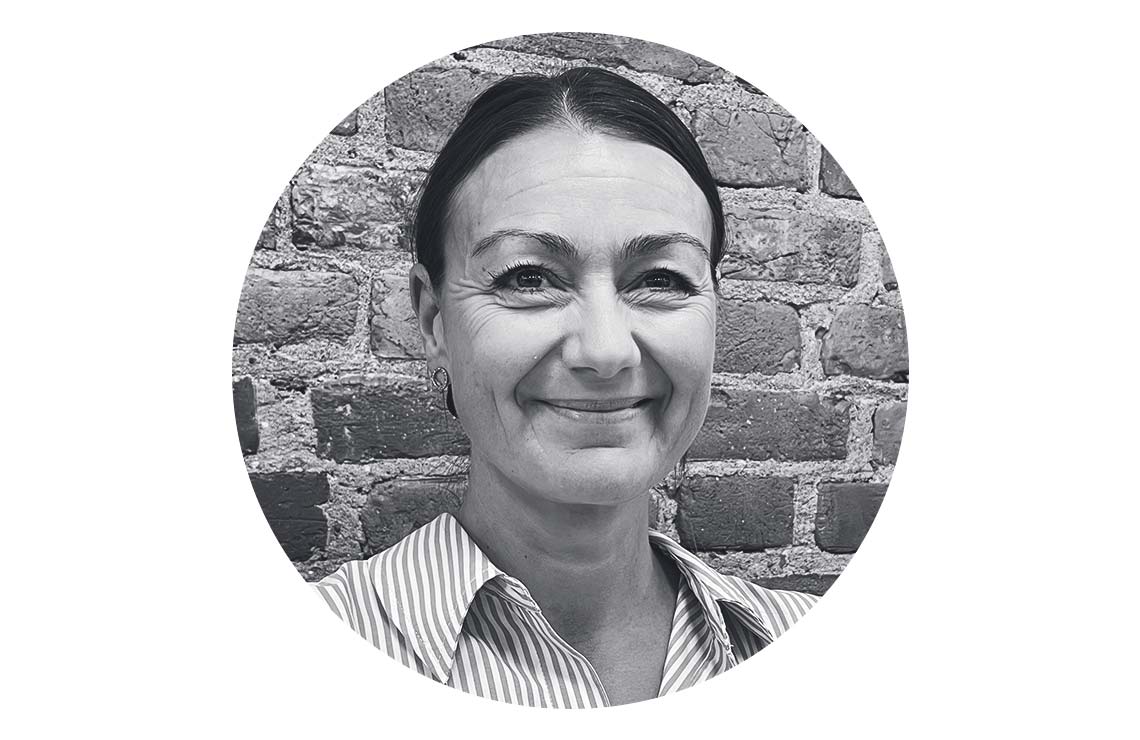
Sylvia Brudeli
Chief Product Officer, Nomono
Years in Schibsted: 1
My favourite song the last decade: Smilet i ditt eget speil – Chris Holsten
Tech trends 2024
Tech trends 2024
5G, quantum computing and clean tech. Here are some tech trends we will hear more about in the upcoming year.

Tech trends 2024
5G, quantum computing and clean tech. Here are some tech trends we will hear more about in the upcoming year.
Companies are saying goodbye to “the world’s factory”
We’re seeing a lot of companies moving their production out of China, “the world’s factory,” for several reasons. Many decided to start diversifying their supply chains following the chaos of the pandemic, and several countries, especially in South Asia, made it clear that they wanted in. The Indian government started reducing taxes and regulations on businesses and investing in infrastructure to make it a more attractive option. We’ve already seen Apple move some of its production of the iPhone to India, now producing 7% of its iPhones there. Other big players like Intel, Microsoft and Nike are talking about moving production elsewhere. This is likely only the start of this trend.

Will we be able to develop completely new strategies and devices with quantum computing?

Will we be able to develop completely new strategies and devices with quantum computing?
Is quantum computing the next revolution?
We’re expecting to see continued development of quantum computing. In 2024, IBM is set to launch a European quantum data centre complying with GDPR. The advancements in quantum computing could revolutionize banking, medicine, cryptography and other industries handling large amounts of data. As we wrote back in 2022, a major task that lies ahead will be to explore the applications of quantum computing, to think differently and to develop completely new strategies and devices for this technology.
3,3% is the expected growth rate for energy consumption in 2024, according to the IEA.


3,3% is the expected growth rate for energy consumption in 2024, according to the IEA.
Global power grid instability
3,3% is the expected growth rate for energy consumption in 2024, according to the IEA. Following the economic downturn of the last year and the subsequent energy crisis, an increased demand could lead to power grid instability globally. Businesses need to prepare to be more energy-efficient and self-reliant in the coming years.
Big tech investing in healthcare
Healthtech will be revolutionized by AI, especially in diagnosis and drug creation where a massive amount of data points need to be analysed. We also expect remote healthcare to grow, along with wearable technology being used for preventative care. Apple is working on an AI-powered health coaching service and new technology for tracking emotions, and Spotify founder Daniel Ek launched the preventative care startup Neko this year.

5G networks have the potential to lower costs and improve efficiency in smart ciities.

5G networks have the potential to lower costs and improve efficiency in smart ciities.
5G and smart cities
As 5G networks expand, we can expect the development of new technologies and services as well as the evolution of current ones. Smart cities with updated infrastructure have the potential to lower costs, improve efficiency, and increase security and interconnectivity.
We can expect more premium versions of social media accounts.


We can expect more premium versions of social media accounts.
Social media can come at a cost
Social media platforms are looking for more revenue streams as restrictions on targeted advertising are coming from tech giants like Apple and EU regulators. One avenue they’re exploring is paywalling: X (formerly Twitter) is charging for verification and Snapchat is offering additional features for a monthly fee – which over two million people have paid for. Meta and TikTok are also exploring these options, and we’re likely to see more premium versions of social media accounts soon.

Global investments in clean energy technologies is expected to rise faster than investment in fossil fuels.

Global investments in clean energy technologies is expected to rise faster than investment in fossil fuels.
Clean energy ahead of fossil
As global climate and energy concerns keep growing, we expect to see developments in cleantech with further transitioning to renewable energy sources. The IEA expects global investments in clean energy technologies to rise faster than investments in fossil fuels, and climate fintech is one of the strongest innovation areas for European startups.
71% of people would already rather utilize voice tech than a keyboard when searching online, PWC research suggests. We’ll continue to see voice-powered technology develop through AI and natural language processing, and voice assistants will be further enhanced.
Less connection, more consumption
Social media has become less social and more media. There have been several signs that social media platforms aren’t living up to their proclaimed mission. All the most popular spaces have, or are, moving from a place to connect with friends to another place to consume media. They’ve entered a space of increased competition for the consumer’s attention, fighting not only other social platforms but also all other media.
[Sassy_Social_Share]
EU regulations – a balancing act
EU regulations – a balancing act
A tsunami of digital regulation is on its way. Schibsted is calling for regulations that promote circular economy and innovation while protecting consumers.
By Petra Wikström

EU regulations – a balancing act
A tsunami of digital regulation is on its way. Schibsted is calling for regulations that promote circular economy and innovation while protecting consumers.
By Petra Wikström
Today, we live in a very different world than it was just a few years ago. Everything has changed; the geopolitical landscape, the energy market, and the cost of living. But what has also changed is the view on regulating the Internet. Some years ago, most politicians in the Nordics believed that the Internet should be free from rules and that a liberal regime was the only guardian of innovation. They said that tech companies should not be liable for the content on their platforms and big tech should be able to grow by acquiring start-ups.
Instruments with huge impact
The pendulum has now swung the other way, and in 2023 we see overwhelming support from Nordic decision-makers for the EU landmark regulations of the digital landscape, namely the Digital Services Act (DSA) and the Digital Markets Act (DMA). Both regulations were adopted by the EU institutions in 2022 and will become a reality at the start of 2024.
These instruments will have a huge impact on the way platforms must deal with liability for illegal content, but also how big tech companies should deal with their business users. The guiding principles have been to create fair and transparent rules that level the competition in the market and protect users and consumers from unfair commercial practices.
But while the EU wants to boost the European digital economy, it also wants to create a safe internet based on European values. This is a tricky balancing act between those who want liberal rules that allow for innovation and increased global competition and those who want heavy regulation that protects consumers of digital services.

EU is balancing between liberal rules and heavy regulation to protect consumers.

EU is balancing between liberal rules and heavy regulation to protect consumers.
Recent global events have undoubtedly strengthened the perception among EU policymakers that the EU needs to be its own strong force and promote a distinct “third way” in regulating the digital economy, somewhere between the USA’s “laissez-faire” and Chinese authoritarianism.
This will and has already led to more regulatory oversight and enforcement powers at the EU level, making Brussels an ever-more important focus for tech regulation.
Increased call for liability
During the past five years, we have seen a “tsunami” of proposed legisation affecting online marketplaces especially. Schibsted is currently monitoring or actively lobbying more than ten different EU proposals that have an impact on our businesses. The main reason for this regulation frenzy is the lack of trust by decision-makers in new online platforms operating in the EU. Many platforms are established outside Europe, which has led to an increased call for greater liability over the products these online marketplaces offer, as well as more control over the businesses selling the products and more collaboration with national authorities.
In addition to increased consumer protection, the EU has intensified its efforts to promote a transition towards a circular economy through various proposals. These are expected to lead to more durable and repairable products in the EU and more trustworthy environmental information being communicated by businesses.
The EU is also updating its VAT rules for the digital age and has increased the reporting requirements to tax authorities regarding sellers who sell many products via online platforms. All these rules will require changes to many digital services, including Schibsted’s second-hand marketplaces. In particular, we will have to make changes to how we collect information about our business sellers and we must start conducting random checks for dangerous or illegal products among the products listed on our platforms. Although we support the regulation, we think that it is important that the regulation does not require us to control the sale of second-hand products between consumers, as that would risk alienating consumers from selling their used products and throwing them away instead.
Many proposals are promoting a more circular economy. These are expected to lead products that will last longer and be easier to repair.


Many proposals are promoting a more circular economy. These are expected to lead products that will last longer and be easier to repair.
Perhaps the biggest and most difficult initiative of the EU Commission is its aim to be the first in the world to regulate artificial intelligence (AI).
The EU’s proposal for an AI Act was presented in April 2021, and it is still being negotiated by the EU institutions. The proposed legal framework intends to regulate the specific use of AI-systems associated with risks to citizens’ health and safety, building on a “risk-based approach.”
Some AI systems presenting “unacceptable” risks are proposed to be prohibited, such as subliminal techniques, remote biometric data (such as facial recognition cameras in public spaces) and AI systems for social scoring.
According to the proposal, a wide range of “high-risk” AI systems can be used and put on the EU internal market, if they comply with a broad list of requirements and obligations, including an extensive risk assessment procedure. High-risk AI use cases include AI systems used within education, access to essential private and public services, recruitment and HR systems, law enforcement and administration of justice and democratic processes. And some AI systems that only present a “limited risk” are proposed to be subject to transparency obligations.
Allow for innovation
Schibsted actively uses AI in its businesses. We, therefore, support some regulation of AI that focuses on the apparent risks to health and safety but still allows for digital companies in Europe to innovate and develop AI tools. This possibility should not only be left to the global big tech companies. We also need to ensure that we have good large language models for our Nordic languages and that we have control over how our own editorial content is used to train AI models.
Over the next five years, we expect that the EU will continue to regulate online marketplaces. The EU Commission initiated a fitness check of EU consumer law in 2022, to assess its efficacy in protecting consumers in the digital domain. According to a public consultation by the EU Commission, consumer representatives listed manipulative interface design (88.7%) and unfair use of personal data to personalise commercial offers (74.3%) among the five most problematic and frequently occurring practices.
We believe that these sentiments among consumer representatives, such as the national consumer associations, may lead to proposals for new consumer regulation during the next EU Commission mandate. This includes, for example, practices or so-called dark patterns that are perceived to manipulate and “steer” users’ choices and inhibit freedom of choice online.
One of the most discussed and contested issues in digital regulation is the use of personal data for targeted advertising. Many EU decision-makers are frustrated with the way big tech companies in particular use personal data for targeted advertising. And there is a clear political push to do more to protect privacy online.
We also think that the EU will continue to regulate AI, depending on when the AI Act will enter into force and which issues may be left unregulated due to time not yet being ripe for strict regulation of AI.
Schibsted is contributing to these various proposals by calling for a regulatory landscape that promotes a circular economy, and allows for the innovation of state-of-the-art digital products and services, all while protecting consumers from harmful practices in the online market. As the next EU mandate approaches, we are developing our positions on increased consumer protection, enhanced privacy and new AI regulation, which we plan to present to the EU institutions in 2024, in an effort to influence the next EU Commission work programme.
[Sassy_Social_Share]

Petra Wikström
Senior Director of Public Policy, Schibsted
Years in Schibsted: 5
My favourite song the last decade: Blinding Lights – The Weeknd
Building a Norwegian language model
Building a Norwegian language model
ChatGPT’s ability to generate human-like language is impressive. But now it’s important to also build specific models for the small languages like Norwegian.
By John Einar Sandvand

Building a Norwegian language model
ChatGPT’s ability to generate human-like language is impressive. But now it’s important to also build specific models for the small languages like Norwegian.
By John Einar Sandvand
“We need a Norwegian language model, built mainly on Norwegian text,” says Schibsted’s Chief Data & Technology Officer, Sven Størmer Thaulow.
Sven is currently the chair of the Norwegian Research Center for AI Innovation (NorwAI) at NTNU (the Norwegian University of Science and Technology) in Trondheim. Schibsted is one of several industrial partners of NorwAI – and contributes both with both competence and data.
One of the big projects at NorwAI is to build a generative language model for the Norwegian language. The work has been ongoing for more than two years, and the first version was launched last summer. Schibsted has contributed thousands of articles for the model to be trained on. This is a non-commercial research project at present, and Schibsted will be among the first to test how well it performs compared to the big American models.
Why is a Norwegian language model needed when ChatGPT works quite well in all the Scandinavian languages?
Sven shares three main reasons:
Better in Norwegian: A model trained primarily on content in the Norwegian language will likely also be better in Norwegian. To compare, we estimate that only 0.1% of the content ChatGPT was trained on was in Norwegian.
Control over our own infrastructure: Large language models are becoming part of our digital infrastructure. But we see that artificial intelligence is already turning into a global industrial political race. It is not obvious that the technology will be democratised. Therefore, we must develop our own large language models that serve our societies well and can be the basis for innovation and the development of new services for our population.
Consistent with Norwegian culture: We need language models that reflect the value sets of our Nordic societies rather than being dominated by American perspectives. Language models can easily be biased, for instance, because of the content they are trained on or how they have been adjusted. By training our own models there is a greater chance that the output will better reflect our culture and values.
Building a large language model is an enormous effort. It requires vast amounts of text, specialised competence, and enormous computing power. And early this year, Sven invited all media companies in Norway to contribute content to the work of building the model.
“We need content that is representative of the full Norwegian society, from news articles, simple chats, government documents, court verdicts – to even the most beautiful novel,” Sven says.
He adds that a successful Norwegian language model can be a shared resource that will create much value – for Norwegian society at large, for companies like Schibsted and others, as well as for individuals.
[Sassy_Social_Share]
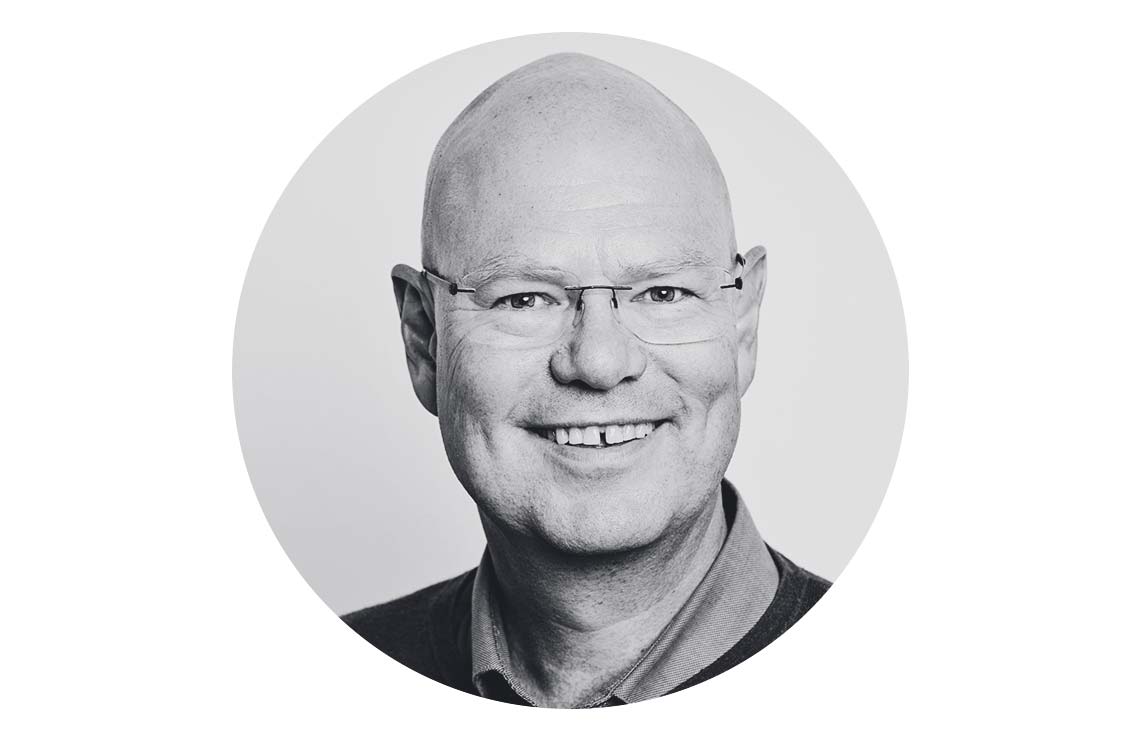
John Einar Sandvand
Senior Communications Manager, Schibsted
Years in Schibsted: 30
My favourite song the last decade: Save Your Tears – The Weeknd
Credits 2024
Future Report Credits: 2024
Produced by Schibsted Global Brand Team, November 2023

Future Report Credits: 2024
Produced by Schibsted Group Communication, Nov 2023
ART DIRECTOR
Andreas Lewandowski
My favourite song from the last decade: Alaska – Maggie Rogers
EDITOR
Ann Axelsson
My favourite song from the last decade: Paper Doll – John Mayer
REPORTER
Camilla Buch
My favourite song from the last decade: Chronically Cautious – Braden Bales
PHOTO EDITOR
Emma-Sofia Olsson
My favourite song from the last decade: Det ska hända dig med – Säkert!

In this tenth edition all authors have chosen their favourite song from the last decade. Listen to them all on Spotify.

In this tenth edition all authors have chosen their favourite song from the last decade. Listen to them all on Spotify.
Credits
Images
Emma-Sofia Olsson, Andreas Lewandowski, Johan Lagerwall, Adobe Stock, Ole Martin Wold, Kilian Munch, Alfred Edward Chalon, Nomono, Tim Aro, Thomas Molén, Zofia Ziakova,Saul Martinez, Lars Rosengren, Magnus Wennman, Adam Sundman, Tomas Oneborg, Espen Rasmussen, Paal Audestad, Andreas Bardell, Helge Mikalsen, Monica Strømdahl, Paul S. Amundsen, Yvonne Åsell, Paweł Wodnicki.
Göteborgstryckeriet
Produced by Schibsted Global Brand Team, November 2023.
A decade of change
A decade of change
The report you are about to read is the tenth edition of Schibsted’s annual outlook on trends within tech, business and people. And as we celebrate this anniversary it’s only natural to reflect upon the myriad transformative events and innovations that have changed the digital landscape and the way we view the world.
By Kristin Skogen Lund, CEO Schibsted
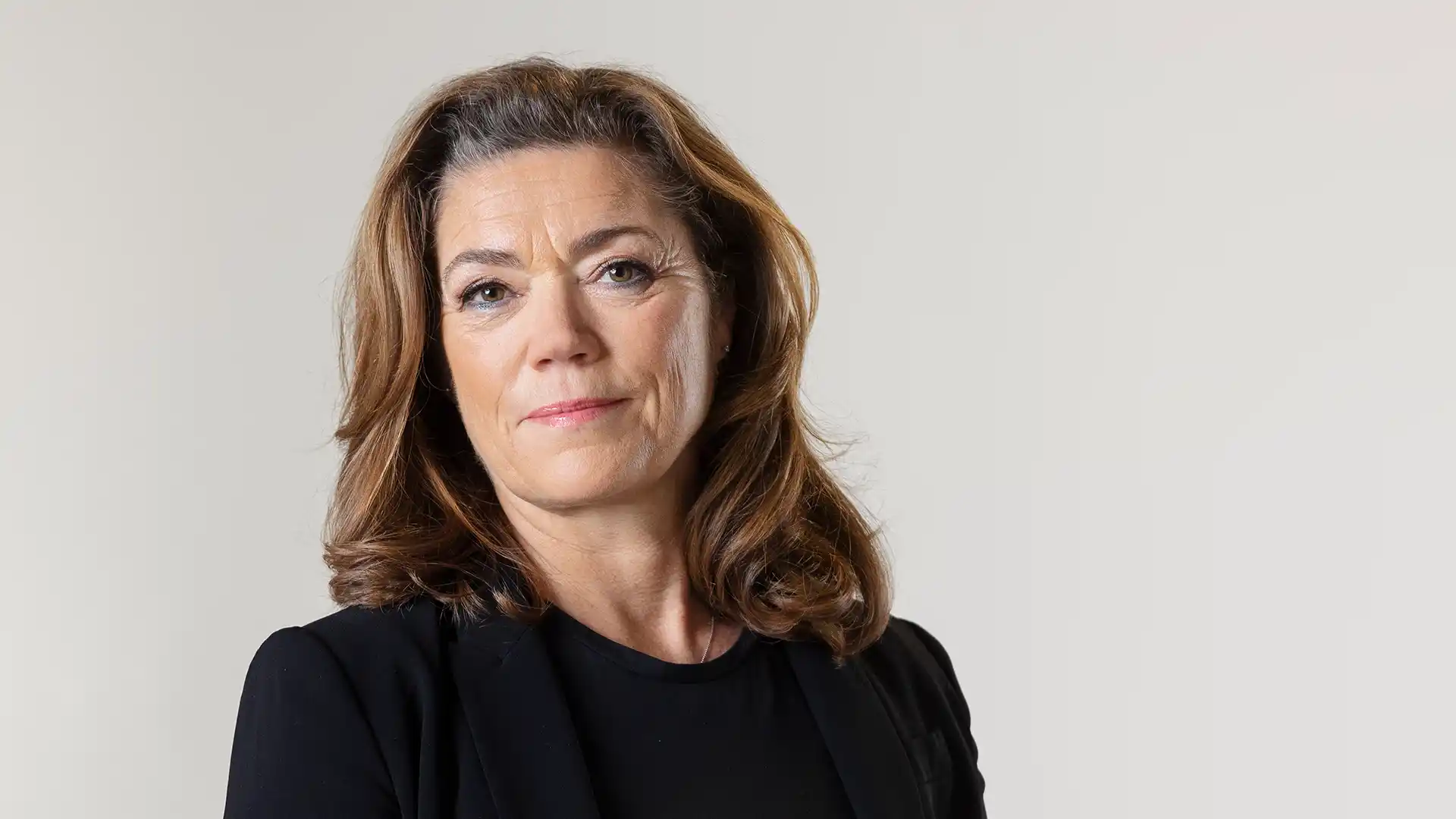
A decade of change
The report you are about to read is the tenth edition of Schibsted’s annual outlook on trends within tech, business and people. And as we celebrate this anniversary it’s only natural to reflect upon the myriad transformative events and innovations that have changed the digital landscape and the way we view the world.
By Kristin Skogen Lund, CEO Schibsted
In the span of just a decade, the digital age has grown in breadth and depth. We’ve seen the steady rise of platform economies and Big Tech. Streaming has replaced traditional forms of entertainment, rendering DVD collections to the realm of nostalgic relics. With e-commerce and direct-to-consumer trends, brick-and-mortar stores are increasingly replaced by virtual storefronts. Meanwhile, 5G technology promises speeds and connectivity that seemed impossible just a few years ago. Artificial intelligence and machine learning no longer belong to the world of science fiction but influence our daily lives. And of course, the pandemic that sent shockwaves across the world also revolutionised remote work and digital collaboration.
Yet, amid the dizzying pace of technological and societal change, a singular truth remains: the undeniable need for high-quality and trusted actors in society. This axiom holds particularly true in the world of news media, journalism, online marketplaces, and digital services – the very core of Schibsted’s operations.
At a time when anyone, in principle, can be both a content producer and a content distributor, the integrity and credibility of news sources become paramount. The rise of ‘fake news’ claims, deepfakes, and misinformation on social platforms underscore the need for authentic journalism. While innovations have allowed us to disseminate news faster and wider, it’s the credibility of the source that determines its impact. The fact that trusted and edited news media pay attention and report, enables us to trust our governments, institutions and societies at large.
Similarly, in the vast sea of online marketplaces and services, trust is our anchor. As consumers in the digital age, we face an abundance of choices. You can order just about anything in a few clicks. But this abundance of choice often leads to the paralysis of choice. Here, trusted brands and marketplaces shine because they allow consumers to trust transactions and trust complete strangers who are looking to buy their old car or sofa.
Why is this important? Because the high level of societal trust in the Nordics is one of the main reasons for our societies’ relative success in the world. Societies with high levels of trust and transparency are better equipped to deal with all the other major challenges facing us today. However, trust doesn’t sustain itself, and that’s where Schibsted can truly make an impact. We are committed to working for societies based on trust and transparency and we embrace the opportunities of technological change – always.
This serves as a good reminder that while our world keeps evolving, we remain true to our purpose. We embrace the new, the novel, and the next big thing, but we do so with a commitment to quality and trust.
Favourite song from the last decade
In this tenth edition all authors have chosen their favourite song from the last decade. Listen to them all on Spotify.
[Sassy_Social_Share]

Kristin Skogen Lund
CEO
Years in Schibsted: 5 as CEO of Schibsted, 6 as Commercial Director and CEO of Aftenposten 2004–2010.
My favourite song the last decade: Formidable – Stromae
Disrupting the pet care market
Disrupting the pet care market
FirstVet is a digital-first veterinary ecosystem, built with trust and passion, and designed to take patients from Doctor Google to diagnosis faster.
By Camilla Buch

Disrupting the pet care market
FirstVet is a digital-first veterinary ecosystem, built with trust and passion, and designed to take patients from Doctor Google to diagnosis faster.
By Camilla Buch
You’re at a cosy cabin in the woods, near a lake, with your beloved four-legged friend. The hustle and bustle of the city is hours away, and you’re eager to let the calming sound of water on sand wash away the stress of the week. Suddenly, there’s a yelp. Or a cough. Or a strange absence of noise from your pet. What do you do? The nearest veterinarian’s office is hours away, but you need help now.
That’s the kind of scenario that inspired the founders of FirstVet, a digital vet service that is “built for pet parents by pet parents.” While it started with content sites – forums amassing the collective knowledge of Sweden’s pet owners – the advent of digital healthcare services would change the founders’ approach.
“All our founders have pets and are invested in an active lifestyle with their pet,” says Rebecca Crusoe, CMO at FirstVet. “And since most of us at FirstVet are pet parents and we know first-hand how worried you get when your pet gets sick or hurt, and how complicated and expensive getting care for your pet can be.”

Stefan Palsson, Chief Operating Officer, Rebecca Crusoe, Chief Marketing Officer and Rebecca’s dog Paddy in FirstVet’s office in Stockholm.

Stefan Palsson, Chief Operating Officer, Rebecca Crusoe, Chief Marketing Officer and Rebecca’s dog Paddy in FirstVet’s office in Stockholm.
Shift in the market
Over the last 30 years, there has been a shift in the veterinary profession – much like the shift in the retail market. There used to be privately-owned clinics, like corner shops, that were easily accessible for most local, value-driven pet owners who are passionate about animal health.
The market today, especially in Sweden, has mostly been consolidated into a few veterinary giants that have acquired smaller clinics and put more focus on large, inner-city veterinary hospitals capable of more advanced – and more expensive – animal care.
“A veterinary visit costs an average of 2,000-3,000 SEK. These rampant costs are due to the giants cornering the market. That’s a model we actively want to challenge.”
One way FirstVet is doing that is by creating a less stressful working environment for their employees.
The customer journey often begins on Google, where you often find a lot of conflicting information.
“Being a veterinarian can be emotionally demanding, requiring you to be compassionate while also making tough calls. It also often requires you to work when many others don’t, which can make it difficult to achieve a good work-life balance. Much like in the human health profession, it’s an industry already on its knees,” says Crusoe.
FirstVet offers their veterinarians a more flexible solution in which they can work from home or combine their clinical work with a digital-first approach. Employees are required to have experience working in a clinic, and many choose to work in their own clinics while supplementing digitally with FirstVet. This also enables employees to take time off. Often, the peak seasons for vets are holiday seasons, when the owners are more likely to be at home, especially in the summer when physical clinics are closed. This model has the added benefit of bringing down costs for the clients.
Veterinarian Charlotte Schildmeijer working from FirstVet’s office in Stockholm.


Veterinarian Charlotte Schildmeijer working from FirstVet’s office in Stockholm.
Working with insurance
Another part of the FirstVet ecosystem is the insurance companies. One of the company’s goals has been to work preventively to decrease the number of emergency cases. By teaming up with the largest insurance companies early on and allowing them to offer FirstVet’s services to their clients at no additional cost, more pet owners are asking for help in time, eliminating the need to go to a veterinary hospital.
Pet owners Manfred and Åsa experienced this first-hand when their rottweiler Kito started to limp and lick his hind paw. After calling their closest vet clinic and being referred to their helpline, they were put on hold, last in a line of 125 other worried pet owners.
That’s when Manfred realised that through Kito’s insurance, they had received an offer of free digital care at FirstVet.
“I went online and booked an appointment straight away. While I waited, I answered a few questions and took pictures of the paw to prepare for the vet.”
After 45 minutes, the vet called and informed them that Kito suffered from furuncle, an abscess caused by an infection of the skin, and how it should be treated.
“We’re looking to disrupt, to challenge old truths and at the very least be a driving force in mending what’s broken in this business,” Crusoe says, adding that they aim to be the first contact for any pet owner.
FirstVet differs from vet clinics offering emergency care because they mainly want to work preventatively. They now operate all hours of the day in seven countries, providing information and helping their customers take an active part in the health of their pets.
According to Crusoe, around 60% of the people calling FirstVet get the help they need in just one call because many pet owner concerns are related to bowel issues, skin problems and runny eyes. These are clear and simple symptoms that rarely need clinical assessment.
Battling misinformation online
To make the experience as seamless as possible for the pet owner and to create an additional revenue stream, FirstVet launched a shop and recently opened its own pharmacy. Their goal is to make sure that patients entering the FirstVet ecosystem are helped the whole way through, especially for people owning pets for the first time. FirstVet saw a lot of new pet owners emerge out of the pandemic, as people’s priorities and possibilities changed.
“We really saw a big boost in pet ownership –especially in the UK where lockdown went on for months on end,” adds Crusoe.
She also explains that with the sheer mass of misinformation, it’s important for FirstVet to act as a myth-buster of sorts. A large part of their clientele is the forward-leaning, information-seeking type of pet owner – the proactive pet parent.
But trying to find reliable information on the internet can be difficult.
“We’re seeing a lot of misinformation spreading on social media. One example is that you shouldn’t cool down a warm dog with cold water during summer because it could lead to gastric volvulus – which isn’t true at all,” she says.
“Because of our start on content sites and forums, we know that the customer journey often begins on Google, where you often find a lot of conflicting information. We want to be your trusted voice in all avenues of pet care, whether you’re looking for a vet to talk to or a new brand of dog food. So, if you start asking Doctor Google about symptoms or products, you’ll soon find us,” Crusoe concludes.
Fact
2016 is the year that FirstVet was founded, in Sweden.
2021 the e-commerce business started.
2023 Schibsted invested in FirstVet to help them with market penetration in the Nordic markets.
FirstVet is established in Norway, Denmark, Finland, Germany, the UK and the US.
[Sassy_Social_Share]

Camilla Buch
Communication Manager, Schibsted
Years in Schibsted: 3
My favourite song the last decade: Chronically Cautious – Braden Bales
Meet Our People 2024: People
Meet some of our people
Michał Domagalski has found a way to keep his tech competence after becoming a manager. Nina Hermansen is working to improve women’s health and Karen Gonçalves is eager to get new employees a great start. Meet three people in Schibsted who are engaged in the working environment.
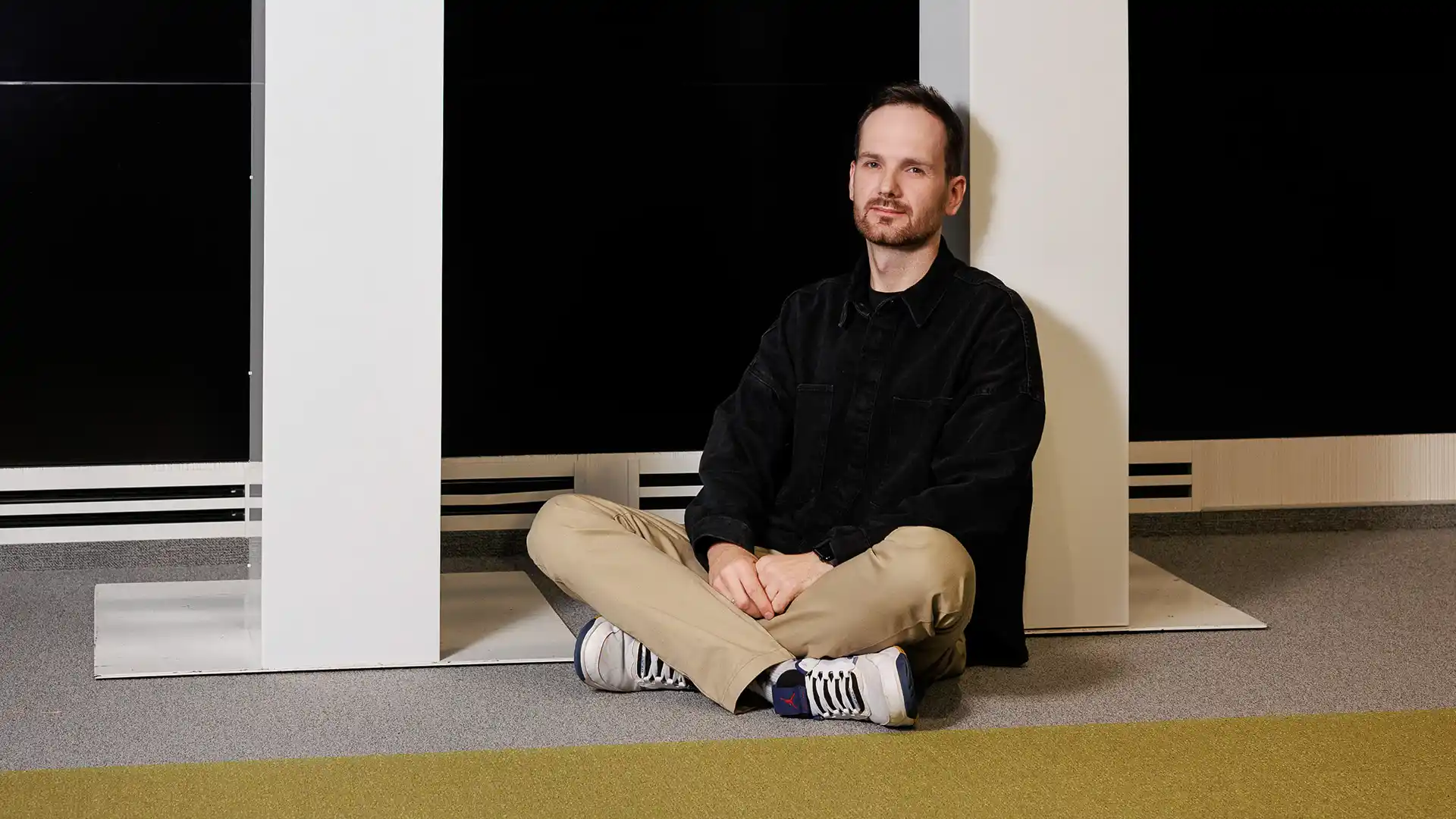
Meet our people
Michał Domagalski has found a way to keep his tech competence after becoming a manager. Nina Hermansen is working to improve women’s health and Karen Gonçalves is eager to get new employees a great start. Meet three people in Schibsted who are engaged in the working environment.
Keeping up with tech as a manager
“When I started to work as a manager two-and-a-half years ago, I had the ambition to keep on coding 50% of the time. That very soon turned out to be impossible,” says Michał Domagalski, Engineering Manager for Schibsted in Krakow.
This made him start thinking about how tech managers can keep up their tech competence, also to offer better support to their teams.
“Being a coder is a very uninterrupted job. But it’s the opposite when you become a manager; it’s a totally different pair of shoes, and it’s easy to lose track of new trends and approaches.”
As he thought about this, Michał ended up identifying things other than coding that managers could do to keep their tech skills.
“For instance, you can find a tech buddy to discuss problems with, who can inspire you and boost your energy,” says Michał. “Your team can also help you if you encourage and facilitate discussions. Being a good listener can help you grow.”
And, of course, reading is great. Documentation and staying updated on architecture and tools are important.
“Everything that’s new will help you to stay on track.” Michał used to miss coding, but not so much anymore.
“Today I feel close to tech, even without coding, thanks to discussing and brainstorming with colleagues.”
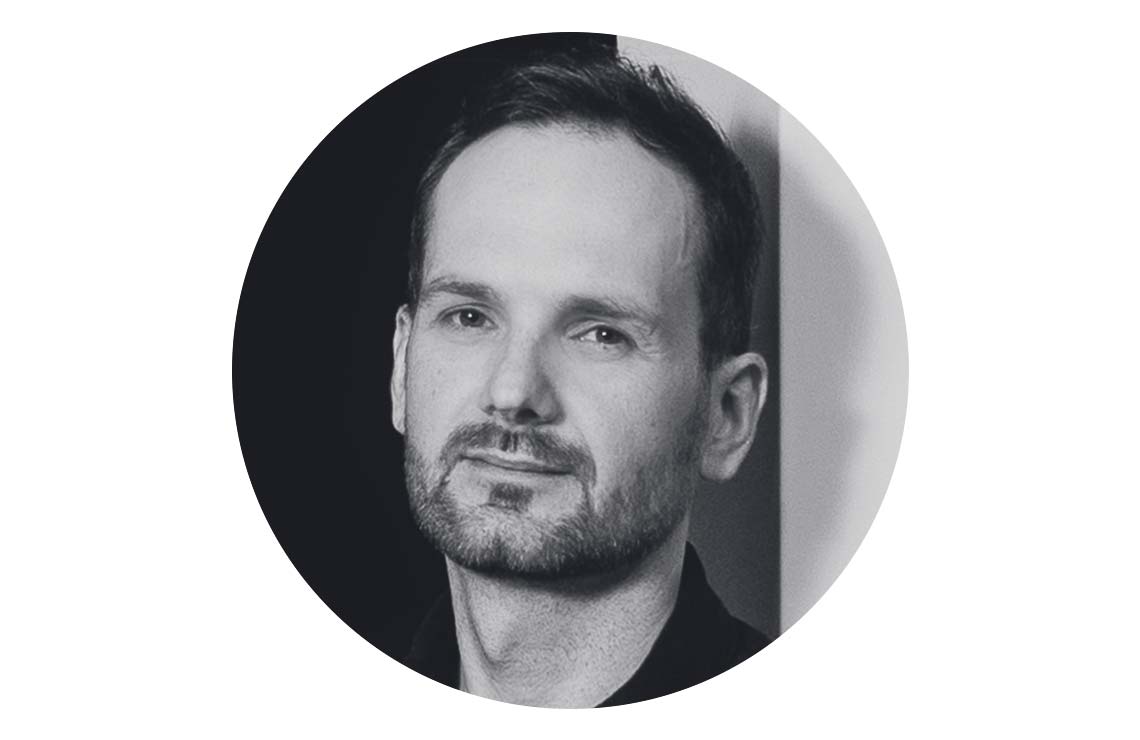
Michał Domagalski
Engineering Manager, Schibsted
Years in Schibsted: 3.5
My favourite song: Downtown – Unto Others
Improving women’s health
In Sweden, 100 women working in Schibsted were given the opportunity to participate in a health screening as part of a pilot project. The scan focused on women’s health issues and symptoms related to the reproductive system.
“This is a part of a larger effort to help our female employees improve their health and, in the long run, create a more equal workplace,” says Nina Hermansen responsible for the project, which is run in cooperation with the femtech company EsterCare.
Many women who suffer from these kinds of complications don’t seek help. And sometimes the attitude is that it’s simply part of being a woman. But having severe pain every month during your period, bleeding heavily, experiencing symptoms of menopause or struggling to get pregnant are all things that will also affect you at work.
In the pilot project, the women get a digital screening, and if the consultation results in a recommendation for a physical meeting with a specialist, then Schibsted covers the cost of the initial appointment.
“All 100 screening opportunities were booked in less than 40 minutes. We also see that many of these women were referred to a specialist – so it’s clear that this meets an important need.”
If the result from the pilot project shows a positive effect, the ambition is to scale it to all of Schibsted.

Nina Hermansen
Leadership Developer, Schibsted
Years in Schibsted: 5
My favourite song: Black skinhead – Kanye West
A good start for new employees
As a new employee at Schibsted, you should know what to expect, what to do, have all your equipment in place and feel inspired when you walk in through the door on that first day of work.
This is the ambition of a global onboarding project Karen Gonçalves is working on.
“This is part of a larger, strategic HR goal to deliver user-friendly people services, combining user needs with technology,” says Karen.
For a large and complex company, this is not always easy to put in place. But, for instance, new employees can now access Workday – Schibsted’s HR tool – before their first day, where they will find information and receive messages.
“Everyone should have the same experience and a good first impression of how we work and collaborate.”
When it comes to managers, the key is to give them the right information at the right time, in an automated way. For instance, automatically reminding them to take the right actions when a new employee is starting. A new micro-site is also in place where managers can find helpful information about how to welcome their newest team members.
“But this is just the foundation,” Karen explains. “The next step is to build an onboarding journey for new hires where they can learn more about Schibsted’s history and the entire Schibsted ecosystem.”

Karen Gonçalves
Global Process Owner – Employee On/Offboarding, Schibsted
Years in Schibsted: 2
My favourite song: Lady – Modjo
[Sassy_Social_Share]
